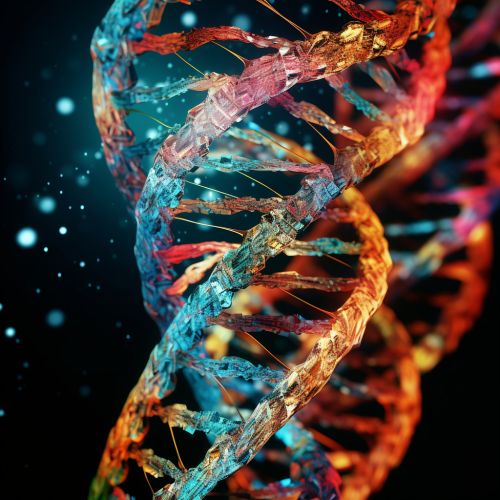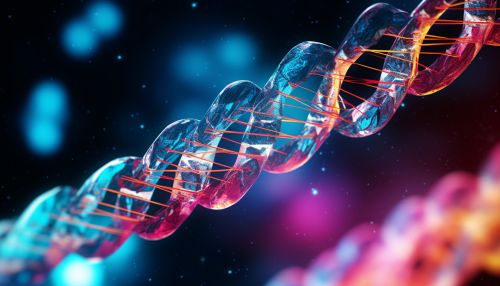DNA repair
Introduction
DNA repair is a collection of processes by which a cell identifies and corrects damage to the DNA molecules that encode its genome. In human cells, both normal metabolic activities and environmental factors such as radiation can cause DNA damage, resulting in as many as 1 million individual molecular lesions per cell per day. Many of these lesions cause structural damage to the DNA molecule and can alter or eliminate the cell's ability to transcribe the gene that the affected DNA encodes. Other lesions induce potentially harmful mutations in the cell's genome, which affect the survival of its daughter cells after it undergoes mitosis. As a consequence, the DNA repair process is constantly active as it responds to damage in the DNA structure. When normal repair processes fail, and when cellular apoptosis does not occur, irreparable DNA damage may occur, including double-strand breaks and DNA crosslinkages (interstrand crosslinks or ICLs). This can eventually lead to malignant tumors, or cancer.
Types of DNA Damage
DNA damage can be subdivided into two main types:
1. Endogenous damage such as attack by reactive oxygen species produced from normal metabolic byproducts (also includes replication errors) 2. Exogenous damage caused by external agents such as ultraviolet [UV] radiation from the sun and chemical agents.


DNA Repair Mechanisms
Cells cannot function if DNA damage corrupts the integrity and accessibility of essential information in the genome (but cells remain superficially functional when so-called "non-essential" genes are lost). Depending on the type of damage inflicted on the DNA's double helical structure, a variety of repair strategies have evolved to restore lost information. If possible, cells use the undamaged strand of the DNA or the sister chromatid as a template to recover the original information. Without access to a template, cells use an error-prone recovery mechanism known as translesion synthesis as a last resort.
1. Direct reversal: Cells are known to eliminate three types of damage to their DNA by chemically reversing it. These mechanisms do not require a template, since the types of damage they counteract can occur in only one of the four bases. Such direct reversal mechanisms are specific to the type of damage incurred and do not involve breakage of the phosphodiester backbone. The formation of pyrimidine dimers upon irradiation with UV light results in an abnormal covalent bond between adjacent pyrimidine bases. The photoreactivation process directly reverses this damage by the action of the enzyme photolyase, whose activation is obligately dependent on energy absorbed from blue/UV light (300–500 nm wavelength) to promote catalysis.
2. Single-strand damage repair: Any alteration to single bases or single-strand breaks are repaired by one of multiple pathways, all of which share common features.
3. Double-strand break repair: Double-strand breaks (DSBs) are particularly hazardous to the cell because they can lead to genome rearrangements. Three mechanisms exist to repair DSBs: non-homologous end joining (NHEJ), microhomology-mediated end joining (MMEJ), and homologous recombination.
DNA Repair and Aging
There is considerable evidence that DNA damage accumulates with age in mammalian tissues, such as those of the brain, muscle, liver and kidney. This accumulation appears to be a consequence of reduced DNA repair, DNA repair decline and cellular senescence. It is likely that this accumulation of DNA damage with age contributes significantly to the aging process.
DNA Repair and Cancer
Defects in the DNA repair process can lead to cancer. Inherited mutations in DNA repair genes (such as BRCA1, BRCA2, MSH2, MLH1, and others) increase the risk of certain types of cancer. Some cancer therapies, such as those that involve ionizing radiation or certain chemotherapies, work by inducing DNA damage in cancer cells.
